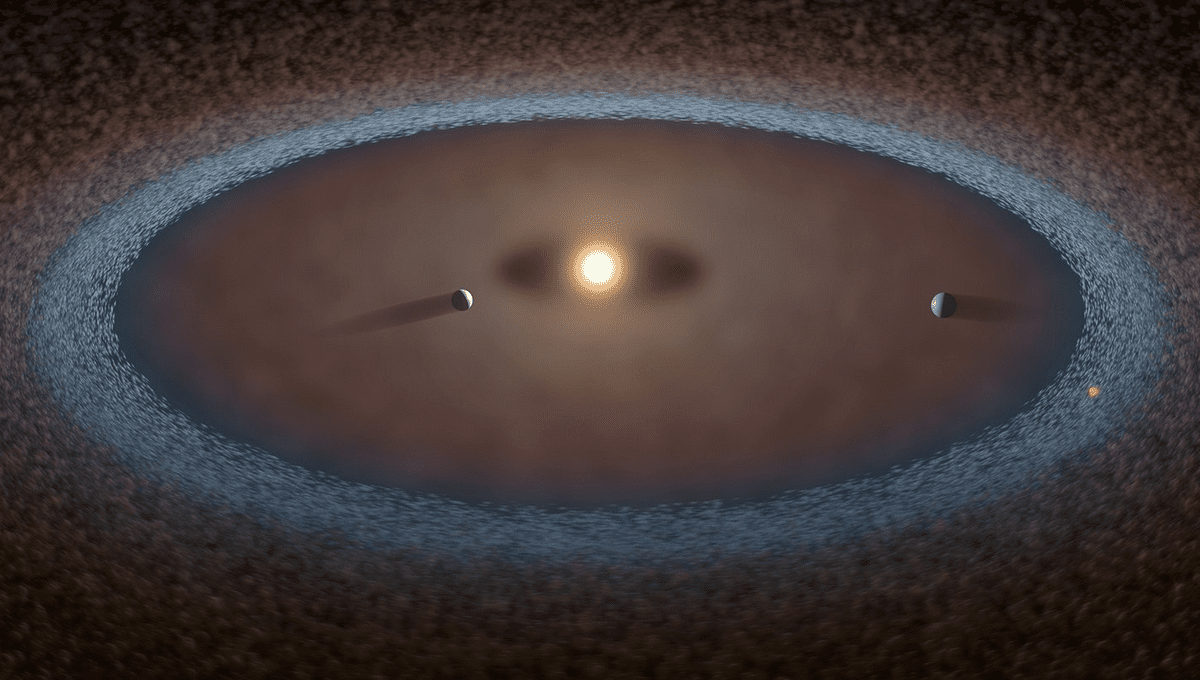
The galaxy is filled with rocky planets a few times the mass of the Earth, (called super-Earths) and astronomers have been struggling to explain why.
A new paper draws on modelling of Jupiter’s four Galilean moons to explain super-Earths’ abundance and a number of their curious features. However, in the process, it overturns work by the same team published in the same journal just over a year ago.
Early exoplanet searches found mostly “hot Jupiters”, because planets are easier to find if they are very massive and orbit close to their star. As planet-hunting technology has improved, and observation times have captured objects with longer orbits, the mix has changed. Our sample is still biased, but if we allow for that we can estimate the true abundance, indicating the irony that the most common planetary class is the one our own system lacks.
“As our observations of exoplanets have grown over the past decade, it has become clear that the standard theory of planet formation needs to be revised, starting with the fundamentals,” said Professor Konstantin Batygin of Caltech in a statement. “We need a theory that can simultaneously explain the formation of the terrestrial planets in our solar system as well as the origins of self-similar systems of super-Earths.”
One of the things Batygin and Dr Alessandro Morbidelli needed to explain is why so many planetary systems have multiple super-Earths with masses very similar to each other. It’s long been assumed it’s just a coincidence that Venus has 82 percent of Earth’s mass, but a surprising number of super-Earths are even more closely matched to others in their system.
“You basically have a planet factory that only knows how to make planets of one mass, and it just squirts them out one after the other,” said Caltech’s Professor Andrew Howard, who helped discover the fact, but was not an author on this paper.
Batygin and Morbidelli turned to an example closer to hand: Jupiter’s four main moons are tightly bunched in size, and relatively close in mass compared to the huge gap to other members of the system. The pair had already offered an explanation for this on the basis the moons formed from rings of material. These rings, in turn, are the product of a balance between forces pulling dust grains towards Jupiter and gas pressure pushing them out.
For grains of a common size, the forces will balance. The dust grains clump together until their combined size makes the outward pressure dominate and they leave the ring, producing moons of very similar size, although the mass diversity is a little greater.
The authors now think something similar happens during planetary formation. Protoplanetary disks are hot near their star and cooler further out. The point where temperatures are cool enough to allow silicate gases to condense to form tiny rocks is called the silicate sublimation line.
“If you’re a dust grain, you feel considerable headwind in the disk because the gas is orbiting a bit more slowly, and you spiral toward the star; but if you’re in vapor form, you simply spiral outward, together with the gas in the expanding disk. So that place where you turn from vapor into solids is where material accumulates,” Batygin said.
Here planets are formed, which then migrate inwards towards their star as a result of interactions with the disk’s gas. Our own Solar System didn’t produce a super-Earth because the nebula from which it formed was too turbulent. If the theory is right the pattern of similar-sized planets won’t apply to worlds more than half the Earth-Sun distance from their star, few of which have been found so far.
Previously Batygin and Morbidelli had proposed super-Earths formed further out where the protoplanetary disk is full of ices and migrated inwards. However, if this were true, these exoplanets would be all be rich in water. In the just over a year since their paper came out rocky super-Earths have been found to be more common, forcing the authors to think again. Exoplanets have become a fast-moving field.
The paper is published in Nature Astronomy.
Source Link: Unified Theory Of Rocky Planet Formation Could Explain Abundance Of Super-Earths